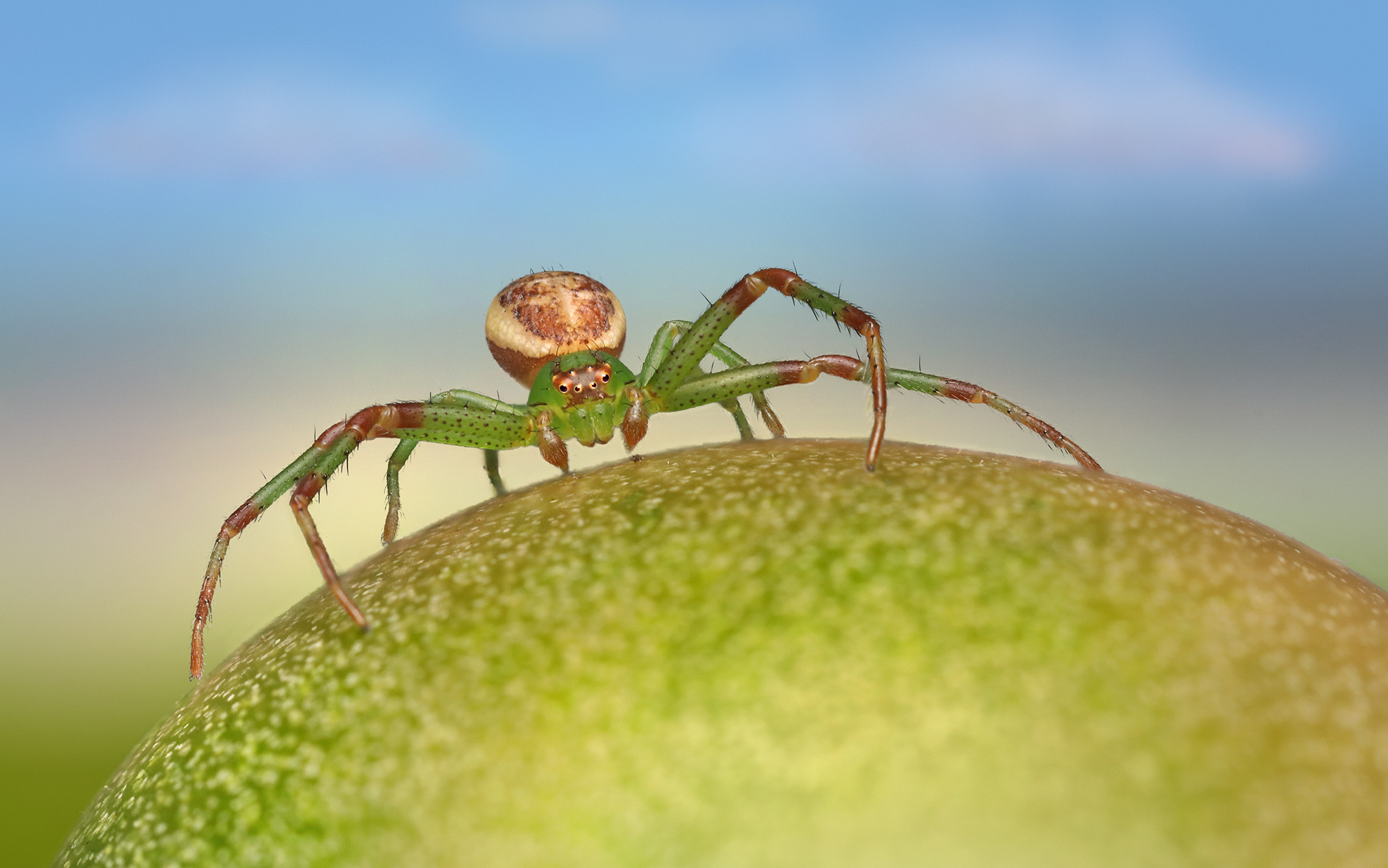Deep Overview: Green Crab Spider (Diaea dorsata)
The green crab spider (Diaea dorsata) is a fascinating arachnid belonging to the Thomisidae family, commonly known as crab spiders due to their sideways-walking movement and crab-like appearance. This species is notable for its vivid green coloration, which provides excellent camouflage among leaves, allowing it to ambush prey with precision.
Taxonomy & Classification
- Kingdom: Animalia
- Phylum: Arthropoda
- Class: Arachnida
- Order: Araneae
- Family: Thomisidae
- Genus: Diaea
- Species: Diaea dorsata
Physical Description
- Size:
- Females: 5–7 mm
- Males: 3–4 mm (smaller than females)
- Coloration:
- Bright green body, matching leaves and foliage
- Reddish-brown markings on the cephalothorax (head region)
- Pale yellowish-green legs
- No web-spinning behavior, relying instead on stealth and ambush tactics
- Body Shape:
- Flat, wide cephalothorax with a compact, rounded abdomen
- Front two pairs of legs longer and stronger, adapted for grasping prey
Distribution & Habitat
- Geographic Range:
- Found across Europe and parts of Asia
- Particularly abundant in forests, woodlands, and shrubby areas
- Preferred Habitat:
- Mostly found on tree leaves and bushes where their green color offers natural camouflage
- Thrives in deciduous forests, preferring oak, beech, and mixed woodlands
Behavior & Hunting Techniques
- Ambush Predator:
- Does not build webs to catch prey
- Uses camouflage to blend into leaves and wait for unsuspecting insects
- Hunts mostly flies, bees, butterflies, and small beetles
- Grabs prey using strong front legs and injects venom to subdue them
- Diurnal Activity:
- Most active during the daylight hours
- Remains hidden under leaves when not hunting
Reproduction & Life Cycle
- Mating Behavior:
- Occurs in spring and early summer
- Males are much smaller and must approach females cautiously to avoid being mistaken for prey
- Egg-Laying & Development:
- Females lay eggs in a silken sac hidden on leaves
- They guard the eggs until the spiderlings hatch
- Young spiders go through multiple molts before reaching maturity
Defense Mechanisms
- Camouflage:
- Their green color helps them avoid predators like birds and larger spiders
- Stillness & Ambush:
- They rely on remaining motionless rather than fleeing when threatened
- Biting:
- Though non-aggressive, they can bite if handled roughly (not dangerous to humans)
Ecological Importance
- Natural Pest Control:
- Helps regulate insect populations by preying on flies, beetles, and pests
- Food Source:
- Preyed upon by birds, larger spiders, and predatory insects
- Indicator Species:
- Their presence can indicate a healthy ecosystem with ample vegetation
Relationship with Humans
- Harmless to Humans:
- Not venomous to humans and rarely bites
- Beneficial for Gardens & Forests:
- Controls harmful insect populations naturally
Fun Facts
- One of the few truly green spiders in Europe
- Can stay completely still for hours, waiting for prey
- Unlike many spiders, it does not rely on silk for hunting
Conclusion
The Diaea dorsata is an exceptional example of natural adaptation. Its bright green color, ambush hunting style, and role in controlling insect populations make it a valuable part of forest ecosystems. Despite its small size, it is a highly effective predator and an intriguing species for those interested in arachnology and wildlife observation.
Views: 1413
Subscribe to the newsletter:
